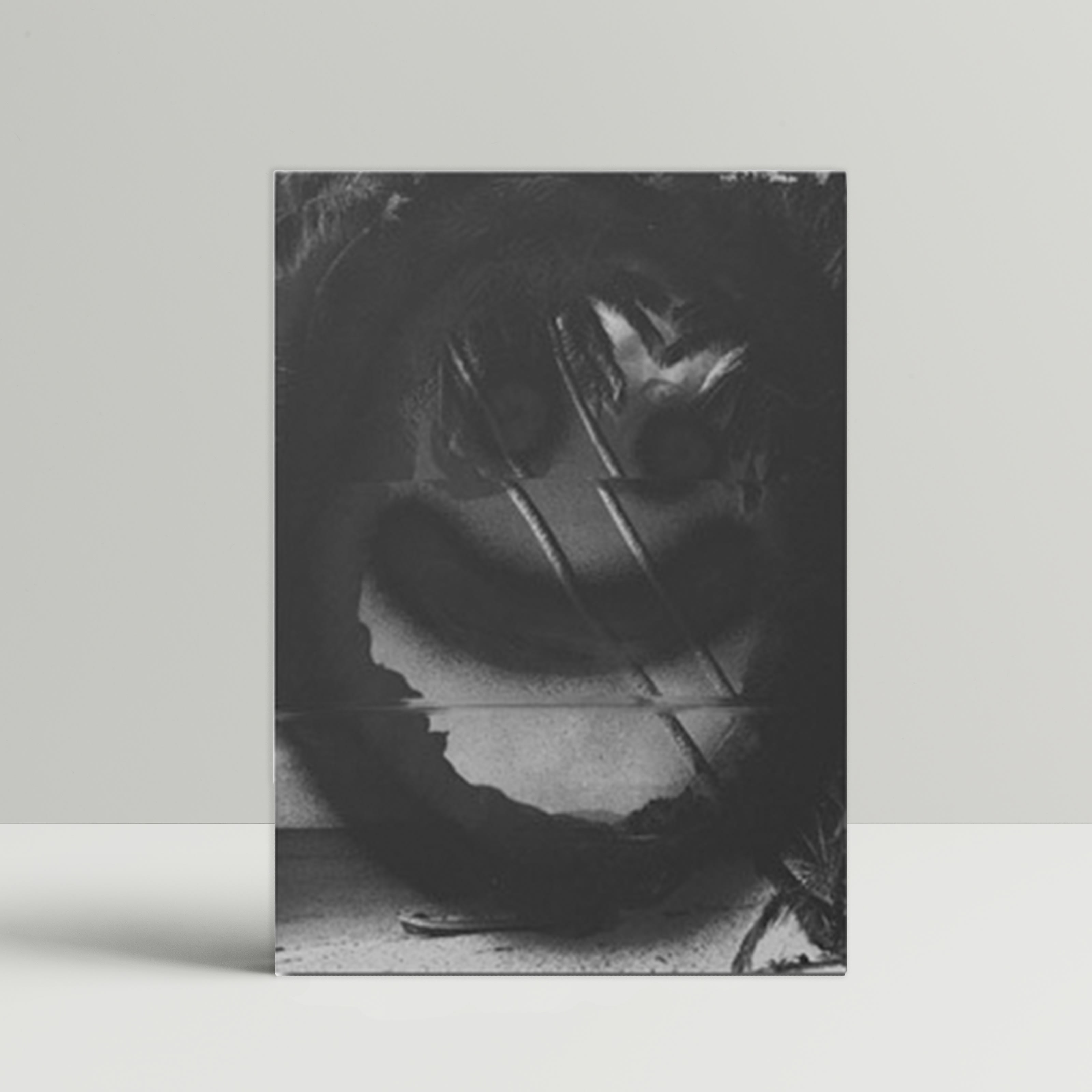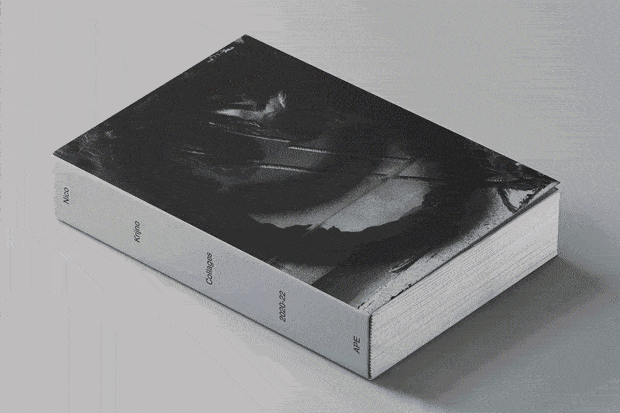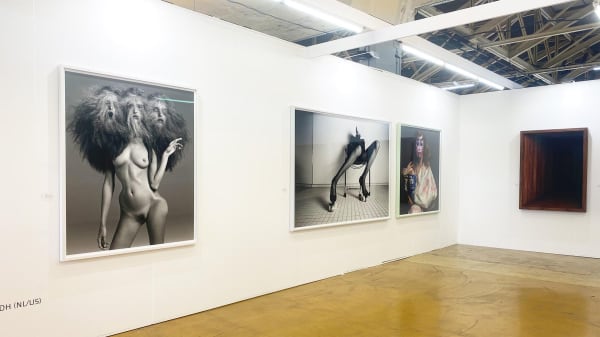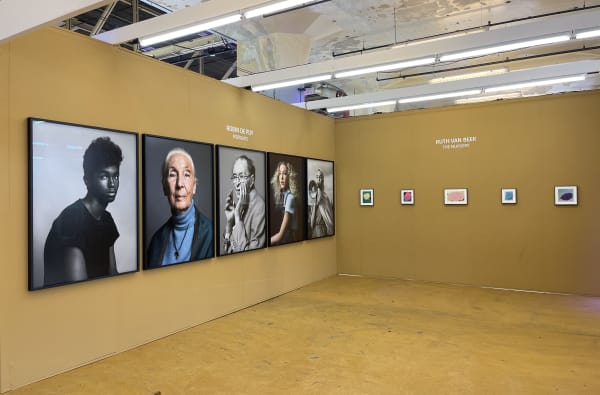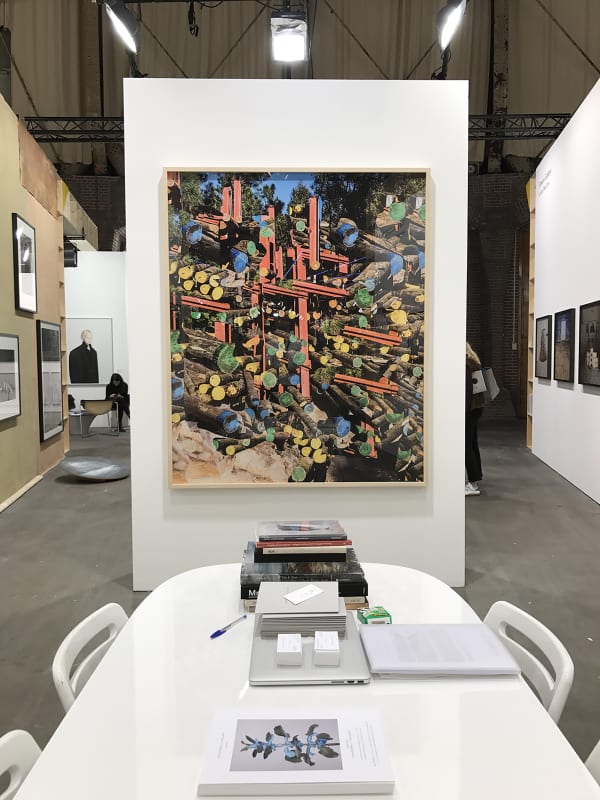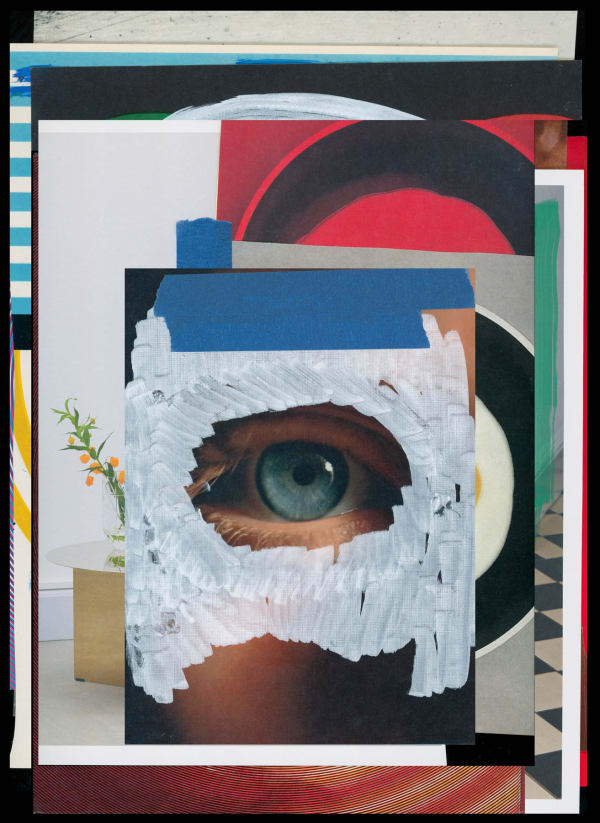-
Nico Krijno (b. 1981, ZA) kickstarts the new year with a dazzling solo show at The Ravestijn Gallery and a freshly-printed publication with Art Paper Editions. Steeped in bright colour, his vibrant collages seem to spill from the book’s pages, bleeding into a series of cascading poster rolls suspended from the gallery’s ceilings.Turning out these images from a home studio in small town South Africa, Krijno’s work reflects a free and playful universe of his own design, as well as his innate desire to ‘make strange’. Here, he considers the influential forces – past and present – that have shaped his artistic signature.Interview by George King.
-
-

-
-
"I literally left home, went to this new school 1000 kilometres away, immersed myself in that world. And my life changed." - Nico Krijno
George King (GK): Tell me a bit about your background; I know your creative path also involved some theatre and video – was it music as well? Did those experiences shape your image-making in any way?
Nico Krijno (NK): Not really music, a bit when I was younger, but then I stopped. I played the piano, did some singing in church, you know? I was that kind of boy! I do play around with sound and create some music for my videos. I also have an obsession with percussion instruments, especially weird African instruments. When I was really young I was always on stage, and always alone for some reason; doing some sort of monologue or solo piece, or singing. I knew that it wasn’t something that I’d make a life out of! Especially growing up here in South Africa, where there was no cinema scene back then. I just knew I had to do it. It was something I had to get out of my system, to then get back into my system, if you know what I mean? It was part of my preparation for life.
GK: What did it teach you?
NK: I think it’s quite a good experience to have in a psychological sense – I’m a very intuitive person, so it teaches you a lot about your machine, how to speak, how to interact, how to be in your body, especially as a creative type. Where I never thought I’d end up acting, I did think I’d make films, and in order to create these dramatic pieces, I felt I had to get under the skin of the actor, to be able to manipulate them in the correct way. So I went to theatre school – an arts-based secondary school where you had a few normal classes but mostly theatre subjects, like the history of costume, literature etc. We had a lot of freedom. We put up plays. We wrote the music for the plays. It was wild! Everyone was smoking pot and boys were kissing in the hallways, all sorts! It was crazy, and exactly what I needed, having come from a normal middle class school beforehand, which in South Africa is very militant – almost like a British private school type experience. I literally left home, went to this new school 1000 kilometres away, immersed myself in that world. And my life changed.
-
"I'm sharing my world, and I think there's something really interesting there" - Nico Krijno
-
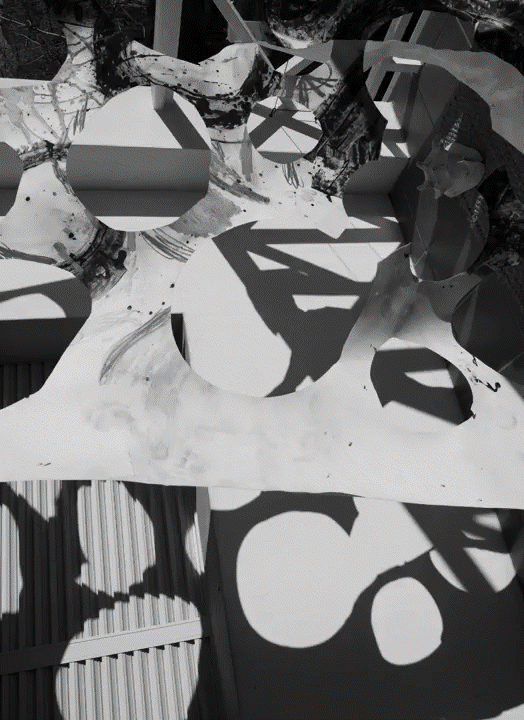 GK: A major shift indeed! And what followed?NK: I then studied ‘Performing for the Camera’, funnily enough! But I stopped in the middle of that because it was terribly boring, and I started studying filmmaking with a major in directing. I went into that industry a bit, editing commercials and advertisements, before the days when even a 13-year old could edit a video! I also worked in London for a bit as an editor/videographer, doing fashion tests in my bedroom for agencies with models. I had to make money to be able to chase my dream, but I soon realised I didn’t want to direct. I wanted to work alone in a studio, or out in the field. There’s too much hierarchy in the film-industry, ideas get lost, it’s a very difficult thing to break into. So I started going back into photography, because photography was something I did as a child.GK: Oh yeah? NK: Yeah, my mother always pushed that quite a lot; she bought me a camera as a child, and I made a lot of photos back then! Purely black and white, very serious architectural studies, portraits of very ragged faces – those kinds of things. I didn’t think I’d make a living out of that, either! It was a hobby. But later, in my 20s, I dived in. And I knew that in order to be honest with myself, to rise up, I needed to do what I wanted to do which was be myself and ‘make strange’. To go deep into photography and its limitations, what it can be. Photography felt quite stale and serious, and I wanted to be free, because it suits my personality; I’m always working on many different things at the same time. I think the theatrical aspect is always in the back of my mind – it’s just a very private theatre with the camera as my audience. But I’m in my body and I’m very physical when I’m creating these things. Even when I’m creating my collages on the scanner, it’s very physical. Like a dance, It’s not me sitting in photoshop. In some projects I’ll use very basic photoshop tools, a little bit like a child! But only a few of my collages are manipulated in post-production.
GK: A major shift indeed! And what followed?NK: I then studied ‘Performing for the Camera’, funnily enough! But I stopped in the middle of that because it was terribly boring, and I started studying filmmaking with a major in directing. I went into that industry a bit, editing commercials and advertisements, before the days when even a 13-year old could edit a video! I also worked in London for a bit as an editor/videographer, doing fashion tests in my bedroom for agencies with models. I had to make money to be able to chase my dream, but I soon realised I didn’t want to direct. I wanted to work alone in a studio, or out in the field. There’s too much hierarchy in the film-industry, ideas get lost, it’s a very difficult thing to break into. So I started going back into photography, because photography was something I did as a child.GK: Oh yeah? NK: Yeah, my mother always pushed that quite a lot; she bought me a camera as a child, and I made a lot of photos back then! Purely black and white, very serious architectural studies, portraits of very ragged faces – those kinds of things. I didn’t think I’d make a living out of that, either! It was a hobby. But later, in my 20s, I dived in. And I knew that in order to be honest with myself, to rise up, I needed to do what I wanted to do which was be myself and ‘make strange’. To go deep into photography and its limitations, what it can be. Photography felt quite stale and serious, and I wanted to be free, because it suits my personality; I’m always working on many different things at the same time. I think the theatrical aspect is always in the back of my mind – it’s just a very private theatre with the camera as my audience. But I’m in my body and I’m very physical when I’m creating these things. Even when I’m creating my collages on the scanner, it’s very physical. Like a dance, It’s not me sitting in photoshop. In some projects I’ll use very basic photoshop tools, a little bit like a child! But only a few of my collages are manipulated in post-production. -
-
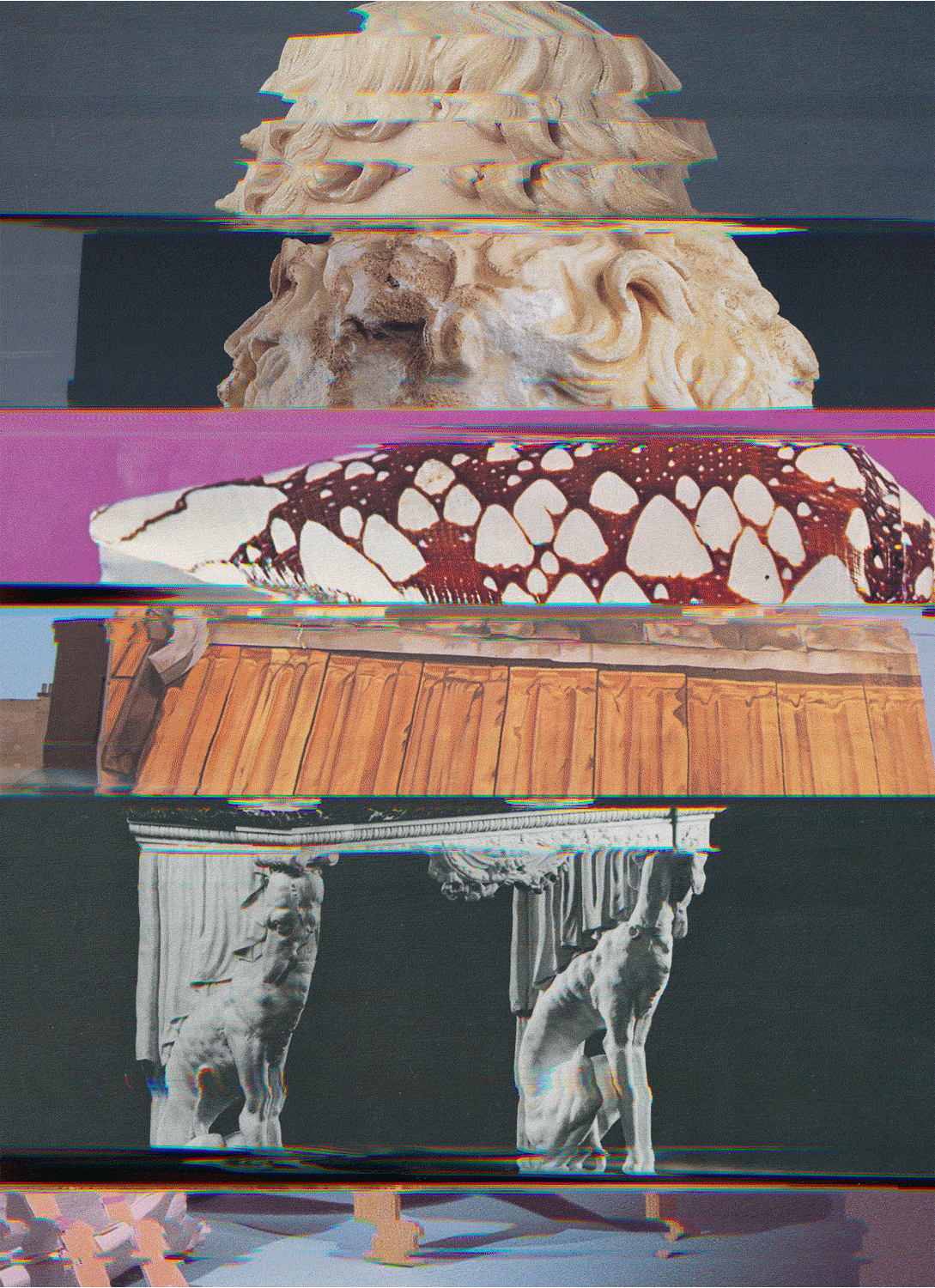 GK: So it’s those recent collages that form the basis of your solo show, The Constellation, at The Ravestijn Gallery. What’s the story with this new chapter in your work?NK: A couple of years back, I was living on a farm with my wife and two daughters. It was pretty isolated, so I was excited to be going on a trip. Living here, being an artist, supporting a family – it’s not easy to get away. I can’t just head to Paris and fill my cup with new inspiration! So I was meant to be going to Australia for a commission, to Denmark for a show, to London for something there. It was all planned and paid for, and I was really looking forward to it, but then the pandemic hit. Everything was cancelled. At that time, I was doing a couple of big jobs, so my wife and daughters went to stay with family so I could focus on getting those assignments done!When the pandemic hit, they couldn’t get back – because you couldn’t cross borders. So I was alone, with all this time in the house, with just my two dogs. I created a desk space in the lounge and started to dive into my archive; a big image archive I’ve collected over the years. It was then a case of playing around with my scanner, because I couldn’t go anywhere and shoot. I would set the scanner to a high dpi so that the laser moved really slowly, and as it moved, I’d bring in all sorts of images from the archive and weave something together. In about ten minutes, a new image emerges, and then it’s finished! I barely do anything to it. Later on they evolved; after making them for about two years, I did start to fuck with the surface in certain instances. I’m constantly experimenting, that’s what it’s about – an accumulation of improvised failures, even dirt on the scanner. All of this stuff adds layers.
GK: So it’s those recent collages that form the basis of your solo show, The Constellation, at The Ravestijn Gallery. What’s the story with this new chapter in your work?NK: A couple of years back, I was living on a farm with my wife and two daughters. It was pretty isolated, so I was excited to be going on a trip. Living here, being an artist, supporting a family – it’s not easy to get away. I can’t just head to Paris and fill my cup with new inspiration! So I was meant to be going to Australia for a commission, to Denmark for a show, to London for something there. It was all planned and paid for, and I was really looking forward to it, but then the pandemic hit. Everything was cancelled. At that time, I was doing a couple of big jobs, so my wife and daughters went to stay with family so I could focus on getting those assignments done!When the pandemic hit, they couldn’t get back – because you couldn’t cross borders. So I was alone, with all this time in the house, with just my two dogs. I created a desk space in the lounge and started to dive into my archive; a big image archive I’ve collected over the years. It was then a case of playing around with my scanner, because I couldn’t go anywhere and shoot. I would set the scanner to a high dpi so that the laser moved really slowly, and as it moved, I’d bring in all sorts of images from the archive and weave something together. In about ten minutes, a new image emerges, and then it’s finished! I barely do anything to it. Later on they evolved; after making them for about two years, I did start to fuck with the surface in certain instances. I’m constantly experimenting, that’s what it’s about – an accumulation of improvised failures, even dirt on the scanner. All of this stuff adds layers.GK: So obviously the lockdown marked a bit of a turn?
NK: Totally. Of the beginning of something camera-less. Which I’d never thought of, because I’m not so interested in collage – not in a traditional A4 cut-and-paste sense!
-
"There’s something nostalgic about finding old books or old objects that trigger something in you." - Nico Krijno
GK: And the material you’re reworking – what kind of images make up this archive?
NK: It’s things that have piqued my interest over time. Things like South African plant books, images of flower arrangements, African art. Loads of old interiors and furniture photography, Things that I’m personally interested in, or things that are steeped in my background and the way I look at the world. The collecting itself is also part of it, because it gets me out of the studio to all sorts of interesting places to source these books and speak with people, mostly octogenarians. In this area where I live, there’s lots of retired, wealthy, well-travelled people. So there’s amazing books that people have brought here with them; I go to hospices and places like that where I find incredible things! I guess the things that draw my eye are somehow linked to memory and my past. But It’s also about a mythology that I’m trying to create, a little world. I’m trying to explain a kind of multi-sensuous world to myself through these images. They’re not necessarily images I’d go out and take; I’d rather collect them. There’s something nostalgic about finding old books or old objects that trigger something in you. I’m interested in the things that people throw away, the social value of these things. So I wouldn’t say my work is nostalgic, but there’s definitely an element within nostalgia that I want to mine.
-
-
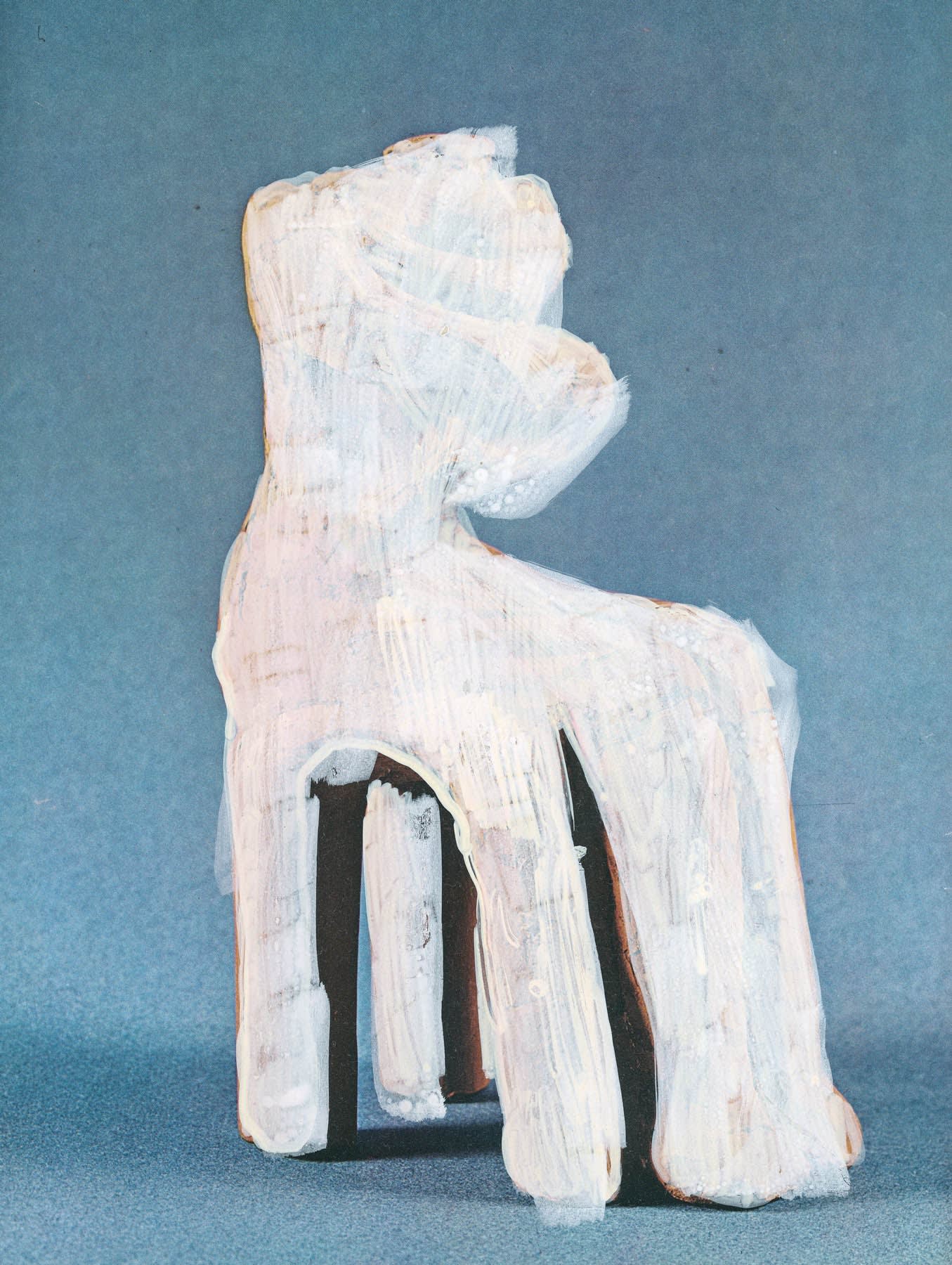
GK: Where exactly are you in South Africa?
NK: I live in Stanford, a little town near Hermanus, which is next to Cape Town. I was living on a farm before, but that didn’t quite work out. It was a more conservative area – a very sort of Afrikaans, christian community. I just didn’t have access to so many resources, and I was often coming to the area where I live now, planning my escape! I always thought it would be a great place to retire, but there’s a lot more young people coming here, in search of a better life away from the city. There’s good food, beautiful mountains, liberal people. Not people who look at you funny when you dress interestingly! Cape Town is expensive, crowded. It’s a tricky place to navigate. It’s about an hour and a half away – a beautiful drive along the coast – but I don’t go much. I don’t need to!
GK: How else do you think your geography might inform your practice?
NK: What I like about this area is that it’s a bit of a sprawl. There’s a lot of little interesting places. There’s affluent towns, poorer towns. There’s a lot of texture and things that I like to mine, because work and life for me is one thing. It’s one soup. I don’t separate them. So there’s a lot of stuff to access here. it’s also an easier, softer environment in which to raise two girls. But the country’s currently going through a bit of a crisis in terms of service delivery due to corruption and overall mismanagement. I’m an optimist, but I don’t see it changing any time soon. Systems like water and electricity are grinding to a halt; we have scheduled power outages where we’re left without power for 10 hours some days. It’s proving a problem for people like me who don’t necessarily have the means to spend 20k to go off grid. So I’m currently keeping my options open and scouting for alternatives, but I’m not sure if I’d ever leave for good. I would, however, like to base myself in Europe for part of the year and operate from there.
-
"All of those people came with a very new approach, and I could completely relate to what was happening. I have to say that I don’t look at a lot of photography, I’m more interested In what painting has to offer." - Nico Krijno
-
GK: When you were first toying with the camera in your youth, you mentioned that you were making all this super serious stuff. When did the fun begin? Did you have a formal training in photography?
NK: One thing I'm grateful for in my case is that I didn't have a formal graphic education. I didn't go to a South African arts institution where many of the lecturers - by most accounts - tell you that the way to make it in the industry is to create highly-politicised works. But everything is political! It shouldn't have to be politicised in a particular sense. I think graduates of those programmes come out and they regurgitate - they think that's what they need to do. So I was rebelling a bit against that, against what's valued and respected in the South African gallery scene, what I was seeing on the internet, the work that people were making. I like to go in and scratch at the surface a little bit, to subvert slightly.GK: And were there any key reference points, or people who felt like kindred spirits in their approach to the medium?NK: Oh, totally! There were loads - like Lucas Blalock, Roe Ethridge, John Divola, David Brandon Geeting. All of those people came with a very new approach, and I could completely relate to what was happening. I have to say that I don't look at a lot of photography, I'm more interested In what painting has to offer. And I try to wash my eyes in nature rather than study others' work. When I do, I think it influences me and I respond to it in a way. I like to be cut off and isolated in that sense. -

Nico Krijno
The Mesentery, 2018
-
GK: That makes sense! Now, let’s talk about your new book, Collages 2020-2022, published by Art Paper Editions. It’s very rare to come across something so dense, with such a volume of images! How did it take shape?
NK: It’s interesting how it happened. For someone like me, who works in a disciplined but very free way, the secret is a good editor. So I told Jurgen Maelfeyt, the designer and publisher at Art Paper Editions, to just edit me hard! He didn’t tell me much – there wasn’t a lot of communication – but he took the work, put it together, and I was wowed! It wasn’t at all how I would have done it, but I thought it was really interesting; the images are presented sequentially, so everything kind of blends together. My instinct would probably have been to juxtapose rather than to show similar images side by side. It reads a bit like an animation in the end. He also sequenced the works vaguely in the order they were made, which I also found interesting. Likewise, I had imagined a thin book, because I’ suggested a soft cover and for it to be a kind of flip-book. If you pick up a hardcover book, it’s immediately so serious and weighty. With a soft cover it’s a different experience. Jurgen used most of the images which, as an experiment, I think is very clever! I really respect him – Art Paper Editions is one of the publishers I’ve been in love with over the years, so it’s bit of a dream come true for me.
GK: I guess you have to cede control sometimes to make a great photobook?
NK: Yeah, to step back and not fuck with the process too much! That’s certainly how I feel I have to work – to let someone else who really makes a lot of books take over. But when I’m making work, I really do photograph for the book, far more than I would work with a wall in mind, if that makes sense? As a framework, I feel like a book can always translate into an exhibition – which brings us to how the work is hung in the show at The Ravestijn Gallery. It really works with the book, because these images start propping each other up. Normally I quite like things to be sparse in their presentation, because my work is already so busy and layered and colourful. But I think these paper rolls make everything a bit less serious! It cuts through that sense of the chin-scratching visitor studying all these framed works behind museum glass, which I like!
GK: There’s a text running alongside your publication that describes the book as an unlikely form for your work, in that it’s a finite object – which is seemingly at odds with your sprawling, infinite approach to image-making. What would you say to that?
NK: Not a whole lot – but I like that text! Maybe the book delineates; it creates a bit of a line in the sand. I can sort of move forward once I’ve put it together, once I’ve made sense of two years of working, you know?
-

-
-
GK: I get it; it’s a bit of a full stop. And we know by now that play and experimentation are key cornerstones of your process, and that these forces are central to the work itself. In the foreword of one of your earlier publications, New Gestures, Sophie Wright describes the experience of looking at your images and being left unsure as to whether these compositions ever really existed. There’s that sense of illusion, of manipulation.NK: That’s my fascination. I want you to not know what you’re looking at. Say an image includes a vase, for instance. I’m not showing you the vase in it’s entirety, but in your head you’re filling in the gaps; there’s something familiar but also something very strange. There’s something distancing but also something pulling you in closer. Familiarity and strangeness is a very interesting tension for me, and the picture is finished in your head.GK: And beyond that, is there anything you hope that your work might incite in a viewer?NK: For me, it’s definitely not about knowing. Knowing creates distance, There is nothing to know. It’s about a feeling, and about where it takes you. There’s no one thing I’m saying. I’m sort of unravelling and putting back together my vision of the world. Asking mostly questions, time is stretched and scrambled and new realities are fabricated, pasted onto the old. I’m explaining the world to myself, and hopefully it speaks to you or unravels something in you. The world within the rectangular frame becomes a stage rather than a window into the world.
-
GK: How would you describe your practice in the most succinct terms? What’s at its core? What threads everything together?
NK: I think for an outsider the work might seem quite disjointed and disparate, but I feel that there’s a world I’m creating that has to be approached in a different way from other very linear bodies of work. I know I spoke about fullstops and lines in the sand, but the work is rather one long thing – its my life’s work, it’s a universe. That’s where the notion of The Constellation comes in, which is the exhibition title. There’s all sort of movements, and I’m experimenting. I don’t wanna get bored – the day I’m bored I’ll just stop and do something else. A lot of people end up repeating themselves, and I don’t want that. I want to stay young, to keep it free and loose, to come up with an interesting image through experimentation. I’m deeply interested in the image, in what the image can be, what it can mean to people.
GK: What’s next? Are you planning to surge forward with the collages, or something else entirely?
NK: I need a little break now! I did do some experiments recently, and I felt I made a little breakthrough, but I don’t want to go too far into making new work right now. I feel I need to process a few things and to not work! But ideas aren’t an issue. I have lots of terrible ideas too, and I make lots of work that I feel I should perhaps keep to myself, but there’s an honesty in that – in showing the failures and all the silliness. I’m sharing my world, and I think there’s something really interesting there.
-
-
For more information on available edtions and prices, please contact the gallery via phone at: +31 (0)20-5306005 or via email at info@theravestijngallery.com
-
-
ART FAIRS
-

Art Rotterdam 2022
Group presentation with Inez & Vinoodh, Nico Krijno, Michel Lamoller, Scheltens & Abbenes, and Theis Wendt 19 - 22 May 2022The Ravestijn Gallery is proud to present Inez & Vinoodh (NL/US), Nico Krijno (ZA), Theis Wendt (DK), Scheltens & Abbenes (NL) and Michel Lamoller (DE) at Art Rotterdam 2022. -

Art Rotterdam 2021
Group presentation Robin de Puy / Ruth van Beek / Nico Krijno 1 - 4 July 2021Van Nelle Fabriek, Rotterdam (NL) Fair: July 1-4, 2021 Art Rotterdam 2021 was initially scheduled to take place in February which was postponed as so many other events. We are... -

UNSEEN 2017
Duo presentation Ruth van Beek / Nico Krijno 22 - 24 September 2017The Ravestijn Gallery presented all new works from two of its artists at UNSEEN Amsterdam: Ruth van Beek and Nico Krijno. Both artists’ preoccupations lie with the possibility of making... -

Art Paris 2017
Duo presentation Alinka Echeverria / Nico Krijno 30 March - 2 April 2017This was the first time for The Ravestijn Gallery to show at the Art Paris Art Fair. After Asia, Art Paris Art Fair continues in its commitment to bring to...
-
-
Press
-

Ten must-see exhibitions in 2023
February 1, 2023From Paris to New York to Amsterdam, discover the exhibitions to visit over the next months. In a riot of colours and meandering forms, South African artist Nico Krijno’s abstract... -

The Constellation by Nico Krijno
January 21, 2023Nico Krijno is a South African artist who creates works of playful abstraction, using photography, collage, painting and sculpture to question established conceptions of meaning and form. Often manipulated using... -

MODES OF FABRICATION
August 2, 2021ARTISTS HAVE LONG SOUGHT INSPIRATION IN FOUND PHOTOS. WE CONSIDER THE ETHICAL AND AESTHETIC IMPLICATIONS OF COLLAGE IN AN AGE OF VISUAL ABUNDANCE. On an unspecified date in the 1960s,...
-



